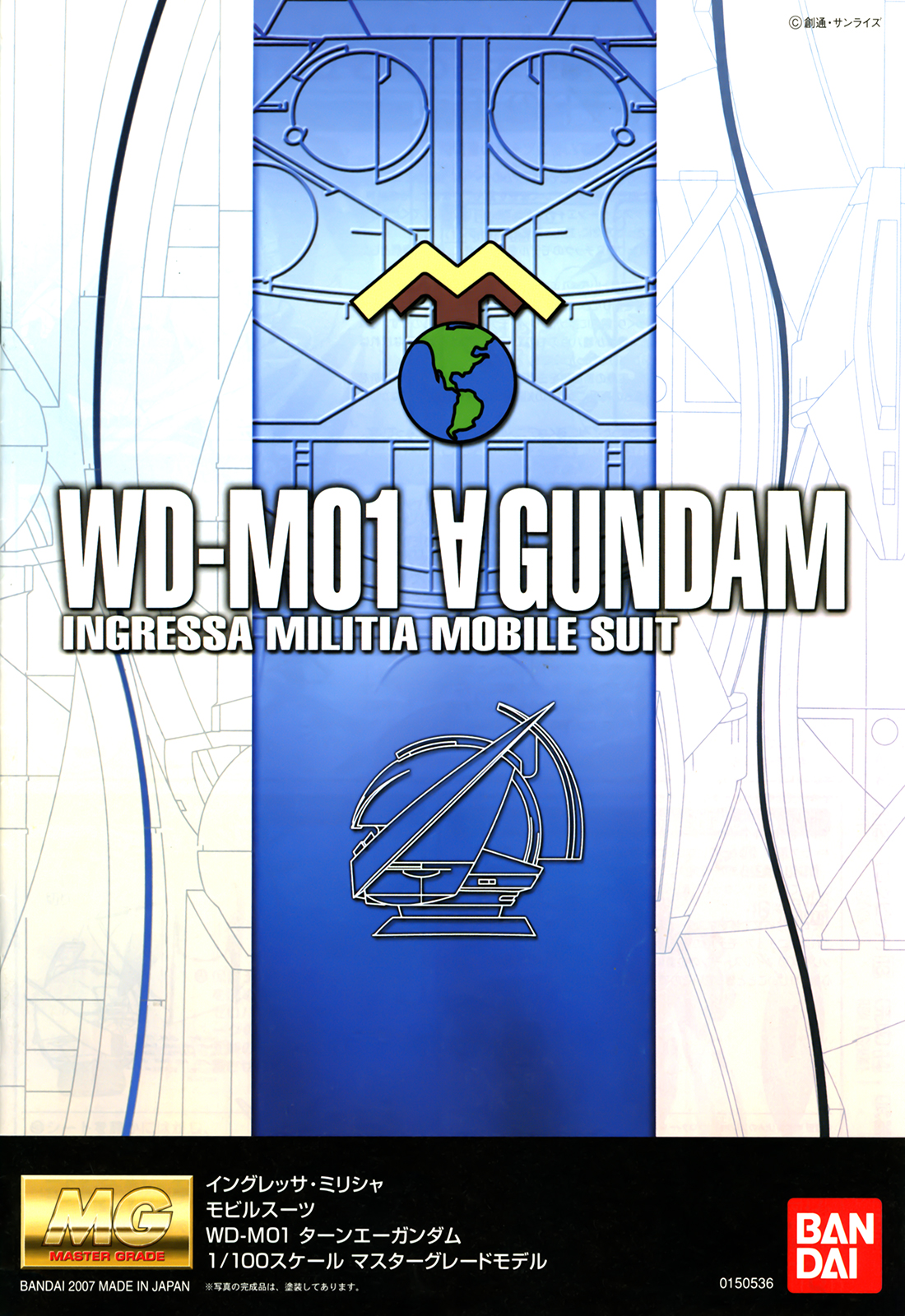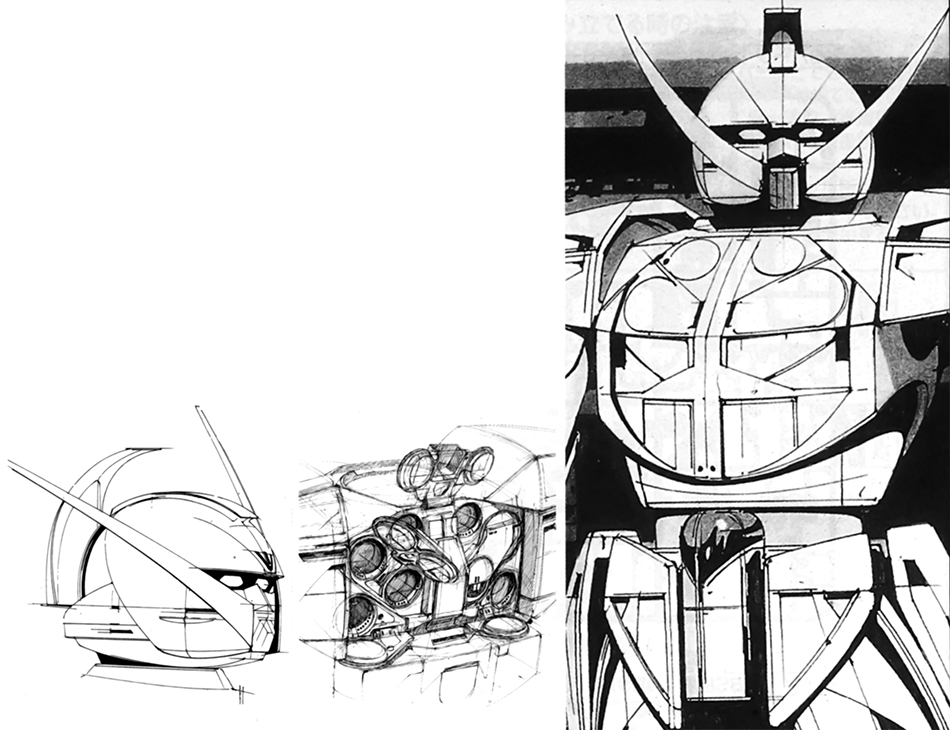Master Grade No.100

GUNPLA INFORMATION
Scale: 1/100 Master Grade No.100
Series: Turn A Gundam
Released: 2007.08
Price: 3,800 yen
Part Number: 2005040
![]()
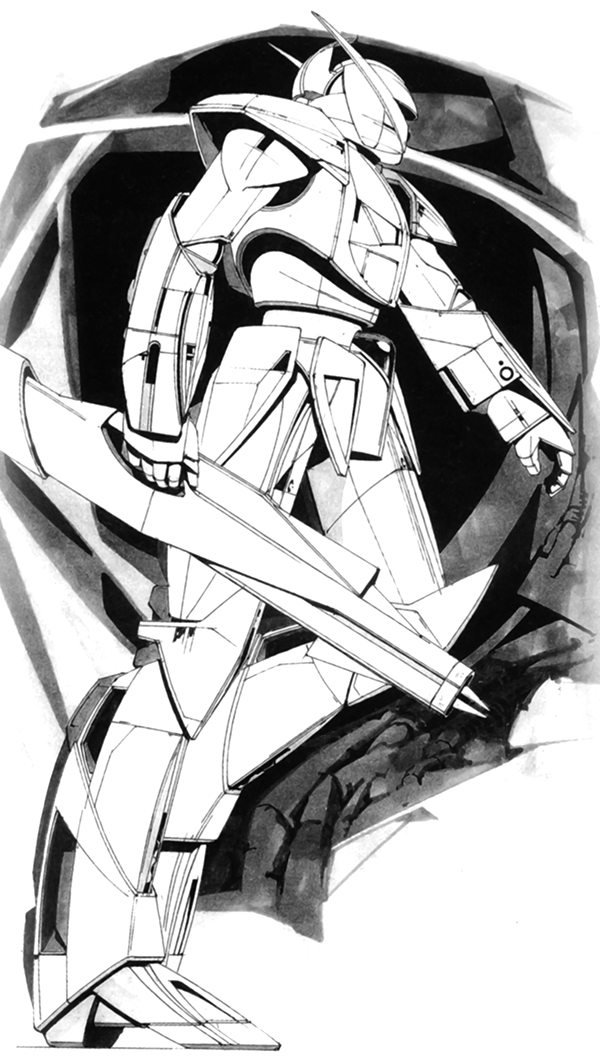
![]()
THE PINNACLE OF ONE HUNDRED
By Yoshiyuki Tomino (Chief Director of Turn A Gundam)
Gundam model kits have carved out their own niche in the annals of miniature modeling, constantly surpassing their own benchmarks. This feat has been possible solely due to the existence of a passionate fan base that drives the market. I’d like to express my heartfelt gratitude to all involved parties and to those who have acquired this kit, as Turn A Gundam marks a significant milestone in the Master Grade lineup.
Over five decades ago, I was utterly flabbergasted when I first laid eyes on a plastic model imported from America.
Up until then, I’d been sketching three-view drawings of fictitious, homemade aircraft. I’d whittle the fuselage and wings from firewood, fashion a canopy by heat-molding celluloid sheets over a wooden mold, and paint the whole contraption silver to create a solid model. However, I could never manage to carve out a propeller. Even though the aircraft was imaginary, I felt the propeller needed to be authentic, but I couldn’t figure out how to draw its cross-section.
Later, I attempted to tackle an F-86, but I hit a wall trying to convert the actual cross-sections into a three-view drawing. Much like with the propeller, I was forced to confront my lack of knowledge about reproducing real-world details and my inability to gather proper reference materials.
By the time Japanese models began to surpass their American counterparts, I had transitioned into the anime industry. I found myself working on “robot” genre projects – essentially, creating works based on pure fantasy. This led me to think that model kits of this genre might be a good idea, harking back to my memories of building models of non-existent personal aircraft.
In reality, though, we were limited to what was known as “chogokin” (super alloy) toys. When Bandai started producing Gundam model kits, there was a period when we felt that toys made by a toy manufacturer were different. Nevertheless, I was thrilled to see fictional designs become easily assembled products. They were more precise than anything I could make by hand, and I felt they had merit as miniature models.
Still, there was a nagging sense that we couldn’t compete with the high-quality train models from overseas. However, watching the models of my own works gradually bridge this gap has been a joyous experience.
The decision to introduce the Turn A model into the Gundam series was rooted in those memories from my first year of junior high. I had come to keenly feel that designs that were entirely original were lacking; we needed to inject a more realistic sensibility.
This led to commissioning Syd Mead. To me, he was practically a deity, and I was prepared to accept anything he proposed. While it’s unfortunate that the reception wasn’t entirely positive, I still feel to this day that it wasn’t a wasted effort.
The sleekness demanded in industrial design embodies the philosophy that form follows function. That’s what makes it feel “real.” The mustache-like antennae were designed to minimize overall surface area, and the cockpit’s position was chosen to avoid interfering with the entry and exit of the pilot, an element foreign to the overall form. Machines that function reliably tend to have simple structures. That’s why Turn A is simple, yet looks real. Perhaps that’s why it didn’t fully embody the typical “character” aesthetic.
Since then, reality has caught up, with actual bipedal robots taking their first steps. We’ve entered an era where fiction is becoming real, hinting at a potential revival of Turn A’s design philosophy.
The fact that this design ethos has been recreated using Master Grade model technology means this kit will likely become a beacon in the history of miniature models. Furthermore, it brings me immense joy that the younger generation has elevated Turn A to this milestone position in the series. I’m profoundly grateful for this project and its commercialization.
Thank you very much.
![]()
BODY & HEAD UNIT
In C.C.2345, the Gundam emerged from within the White Doll, a divine statue that had long been enshrined as an altar during a coming-of-age ceremony held at Mount Ark near Vicinity Town in Ingressa territory. The head of the ∀ Gundam is not only a collection of sensors but also the central control unit for the mobile suit. While the pilot operates the machine, the mobile suit’s behavior is primarily controlled by the spine pulse sensor installed in the pilot’s seat, which picks up the pilot’s intentions. The head also manages the control of nanomachines responsible for the mobile suit’s metabolism and can release their effects externally in emergencies.
The chest structure is designed as a type of payload space called the multi-purpose silo, which can be reconfigured with devices for different tactics. Originally intended to house various close-combat armaments and equipment such as beam cannon drive units, missile systems, machine guns, or auxiliary power units, it was used to transport livestock and conceal old-century nuclear weapons upon its excavation. A back-mounted option hanger accommodates beam rifles and shields. Pre-sortie equipment selection occurs at the DOC (Device Operation Control) base, allowing the unit to be deployed to the front lines in optimal condition.
![]()
ARM UNIT
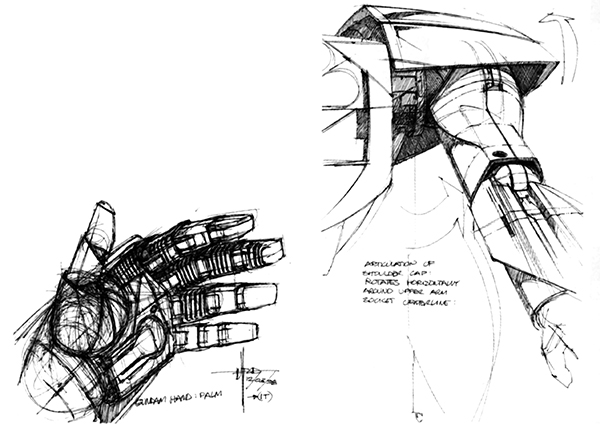
The ∀ Gundam was originally developed as a mobile suit in anticipation of armed conflicts with hostile forces outside Earth. Its basic concept fundamentally overturned conventional mobile suit operational philosophy and served as a proof-of-concept model for the System ∀ (Turn A) Concept. The ∀ Gundam’s body and limbs, including the arms, operate on IFB (I-Field Beam) drive. Unlike many existing mobile suits, this design minimizes space typically occupied by generators and actuators, with the frame itself serving dual roles as structure and armor. Arms function as weapons and equipment platforms, with manipulators for operating, holding, and utilizing various weaponry, while forearm latches handle suspension or attachment. The concept requires maintenance and support facilities and was originally designed to function as a powerful tactical system in conjunction with the DOC base.
![]()
LEG & WAIST UNIT
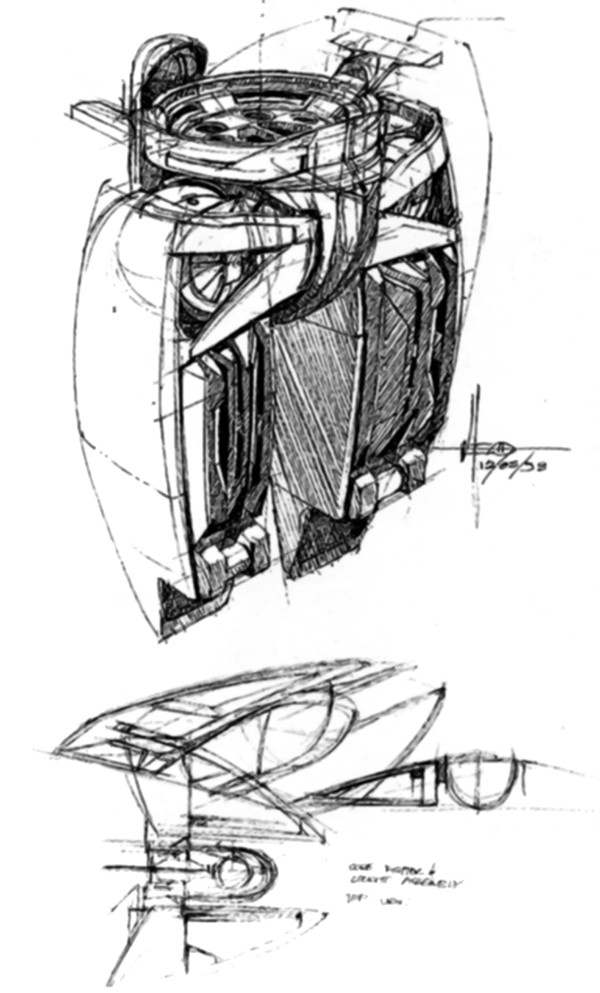
The legs of the ∀ Gundam consist of frontal armor and a frame supporting the body structure, with the remaining space composed of numerous thruster vanes.
While the leg thruster vanes appear to be just a few large pieces loaded into each block, they are actually constructed of smaller self-similar thruster vanes, forming a fractal structure reminiscent of bird feathers. These vanes themselves are assemblies of two-dimensional nozzles equipped with ultra-compact propulsion units containing micro-engines. Upon excavation in C.C.2345, residual soil and nanomachine repair process waste had accumulated at the posterior of the leg units. However, these deposits were subsequently dislodged through locomotion and combat activities, thereby enabling the utilization of this system as mobility equipment for aerial maneuvers. This mechanism functions as thrusters not only within the atmosphere but also in zero-gravity environments like space. However, the ∀ Gundam as a whole has exhibited behavior suggesting interference with force fields or space itself, leaving its true maximum speed and operational environment unknown. Incidentally, latches similar to those on the forearms are also provided on the shins, allowing for the suspension and attachment of armaments.
The cockpit unit in the waist area is equipped with propulsion devices that double as armor on both sides, functioning as an escape block for pilot protection in emergencies. The cockpit block, when detached from the mobile suit, is called the Core Fighter.
CORE FIGHTER: The ∀ Gundam’s cockpit block possesses the capability to disengage from the primary frame as an escape pod during exigent circumstances, facilitating tactical withdrawal from combat zones. In such an event, the anterior armor of the waist section separates in conjunction with the cockpit block, serving as flight panels. The cockpit unit and canopy undergo rotational adjustment, locking into a flight-optimized configuration. The combat capabilities in this configuration remain unknown.
![]()
WEAPONS
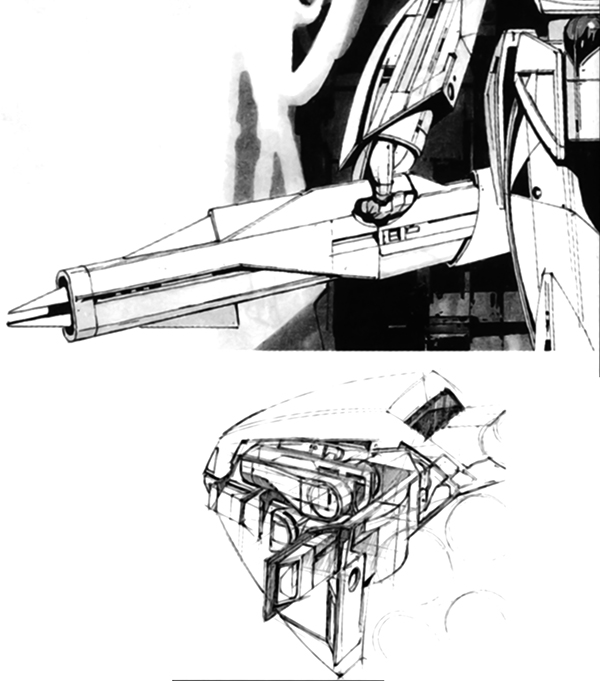
The ∀ Gundam was developed as a close-combat mobile suit for anti-mobile suit operations, serving as a decisive weapon with thoroughly enhanced combat capabilities per unit. Originally, it was intended to be the ultimate mobile weapon capable of eliminating any “enemy” by reconfiguring optimal equipment for each sortie in conjunction with the DOC base.
BEAM RIFLE: The ∀ Gundam’s primary armament. This weapon is suited for medium to long-range combat. When employing maximum output, it is necessary to slide the stock section to engage mode conversion. Failure to perform this operation may result in damage to the beam focusing apparatus. In the worst-case scenario, not only may the rifle itself become inoperable, but the barrel could also detonate, potentially inflicting damage on the mobile suit itself.
BEAM SABER: A close-combat slashing weapon equipped on the ∀ Gundam’s back. It generates a high-temperature, high-pressure beam blade from its tip to melt through targets. The beam blade’s shape can be adjusted according to combat situations, but without special operations, it typically forms a “sword-like” beam.
GUNDAM HAMMER: A mass-based throwing and bludgeoning weapon discovered in the subterranean space when the White Doll’s altar collapsed. The warhead at the chain’s end is equipped with spikes to double the inflicted damage on targets. It appears capable of rocket acceleration when thrown, though details remain unclear.
SHIELD: A massive defensive equipment protecting the majority of the mobile suit’s projected area. The defensive surface comprises multiple layers stacked like a shell, each designed to protect the unit from various attack methods. These include structures for mitigating physical gravitational acceleration and blocking heat conduction. Depending on the activation state of each structural component, it also possesses self-repair capabilities.



